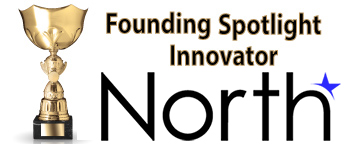 Newswire Summaries
Newswire Summaries
Embedded finance to process over $7T in transactions by 2030, RevitPay finds
Friday, January 16, 2026 18:34:41 (UTC)
Embedded Finance to Process Over $7 Trillion in Transactions By 2030, RevitPay Reports CLEVELAND, Jan. 15, 2026 /PRNewswire/ -- The financial world is on the brink of a massive transformation as embedded finance and flexible payment models surge toward mainstream adoption, with projected global transaction volume expected to exceed $7 trillion annually by 2030. Embedded finance is reshaping how consumers and businesses interact with money. Rather than visiting separate digital bank...
RouteSense aims to bring predictive analytics, real-time health intelligence to payments
Friday, January 16, 2026 18:32:20 (UTC)
RouteSense Launches With ~$2M in Pre-Seed Funding to Bring Predictive Analytics and Real-Time MID Health Intelligence to the Payments Industry Payments data analytics company launches first product as VAMP enforcement drives demand for real-time visibility SALT LAKE CITY, Jan. 15, 2026 /PRNewswire/ -- RouteSense, a data analytics company delivering predictive intelligence for the payments industry, announced its official launch alongside a ~$2 million pre-seed round led by Redbu...
Feedzai, Matrix USA tackle financial-crime prevention with AI-native defenses
Friday, January 16, 2026 18:29:31 (UTC)
Feedzai and Matrix USA Launch Global Partnership to Modernize Financial-Crime Prevention with AI-Native Defenses The new partnership will be anchored by a jointly operated Center of Excellence to support customers LISBON, Portugal, Jan. 15, 2026 /PRNewswire/ -- Feedzai, the leading AI-native RiskOps platform for financial crime prevention, and Matrix USA, a leader in advisory and technology services for the financial industry, today announced a global partnership that will bring...
PhotonPay, ClearBank collaborate to expand UK local payment rails
Friday, January 16, 2026 18:27:47 (UTC)
PhotonPay Expands UK Local Payment Rails via New Collaboration with ClearBank HONG KONG, Jan. 15, 2026 /PRNewswire/ -- ClearBank, the enabler of real-time clearing and embedded banking, has announced a collaboration with PhotonPay, an AI-powered global digital financial infrastructure provider offering payment solutions to businesses worldwide. Through this collaboration, PhotonPay's business customers will gain access to a wider range of financial services, including virtual ac...
Helcim Payment Extension lets merchants self-integrate into existing software
Friday, January 16, 2026 18:25:32 (UTC)
Helcim Launches Payment Extension Letting Merchants Self-Integrate into Existing Software CALGARY, AB, Jan. 15, 2026 /PRNewswire/ - Helcim, a payments company dedicated to serving growing business owners with transparent and affordable payment solutions, today announced the launch of the Helcim Payment Extension. This innovative tool allows merchants to seamlessly integrate Helcim's payment processing into the web-based business software they already use, eliminating the need to comp...
Digital payments power $350B in U.S. economic output and 2M jobs, ETA finds
Friday, January 16, 2026 18:24:04 (UTC)
New Study: Digital Payments Power $350B in U.S. Economic Output and 2M Jobs, Unlocking Massive Gains for Consumers, Businesses First such report details value to the U.S. economy's growth, productivity and entrepreneurship WASHINGTON, Jan. 15, 2026 /PRNewswire/ -- Digital payments generate more than $350 billion in annual U.S. economic output and support more than 2 million jobs, while unlocking billions more in downstream economic activity, according to a new national and 50-stat...
Benji Pays launches Benji Payments, powered by Adyen for Platforms
Friday, January 16, 2026 18:22:23 (UTC)
Benji Pays Announces Benji Payments, Powered by Adyen for Platforms VANCOUVER, BC, Jan. 15, 2026 /PRNewswire/ - Benji Pays, a leader in accounts receivable automation for Managed Service Providers (MSPs) and SMBs, today announced the launch of Benji Payments, using Adyen for Platforms as its payment service provider. With Benji Payments, Benji Pays will be able to offer customers fully integrated payment processing directly within the Benji Pays platform, facilitating faster settle...
Online food delivery services market to double from 2024's $300B to $600B by 2033
Friday, January 16, 2026 18:20:17 (UTC)
Online Food Delivery Services Market Set to Double from USD 300 Billion in 2024 to USD 600 Billion by 2033, Registering a Steady 8.5% CAGR - Market Research Intellect The growth of the Online Food Delivery Services Market is driven by increasing smartphone penetration, widespread internet access, and the rising preference for convenience among urban consumers. Busy lifestyles, expanding gig economy delivery networks, and the integration of AI-driven recommendation systems are enhanci...
Kea brings full-stack crypto and fiat payments to ICE 2026
Friday, January 16, 2026 18:17:16 (UTC)
Kea Brings Full-Stack Crypto and Fiat Payments to ICE 2026 One infrastructure for stablecoins, IBAN accounts, and global payouts built for iGaming companies. NICOSIA, Cyprus, Jan. 16, 2026 /PRNewswire/ -- January 19-21, Kea will participate in ICE 2026 in Barcelona. The company will showcase a full-stack payment solutions ecosystem that lets iGaming businesses run crypto and fiat side by side. Teams can accept and hold stablecoins, settle on IBAN, and pay partners locally from one...
Harvard FCU to automate >85% of decisions with MANTL onboarding, account opening
Thursday, January 15, 2026 19:08:59 (UTC)
Harvard Federal Credit Union Unifies the End-to-End Member Experience with the Alkami Digital Sales & Service Platform The addition of MANTL to the Alkami Digital Banking Solution and Data & Marketing Solution unlocks the credit union’s ability to redefine relationship banking across the entire account holder journey PLANO, TX –Jan. 15, 2026– Alkami Technology, Inc. (Nasdaq: ALKT) (“Alkami”), a digital sales and service platform provider for financial institutions in the U.S., ...




